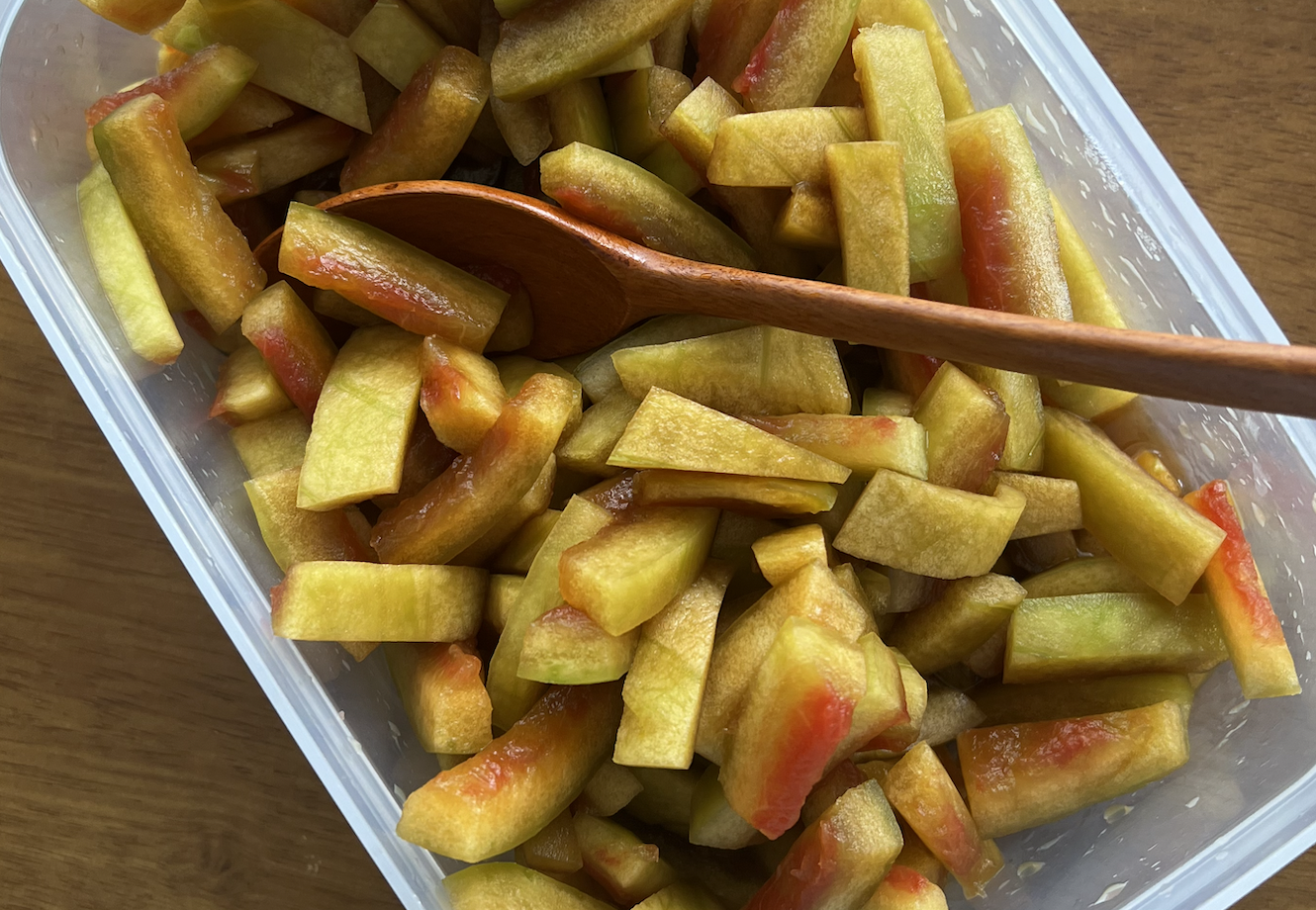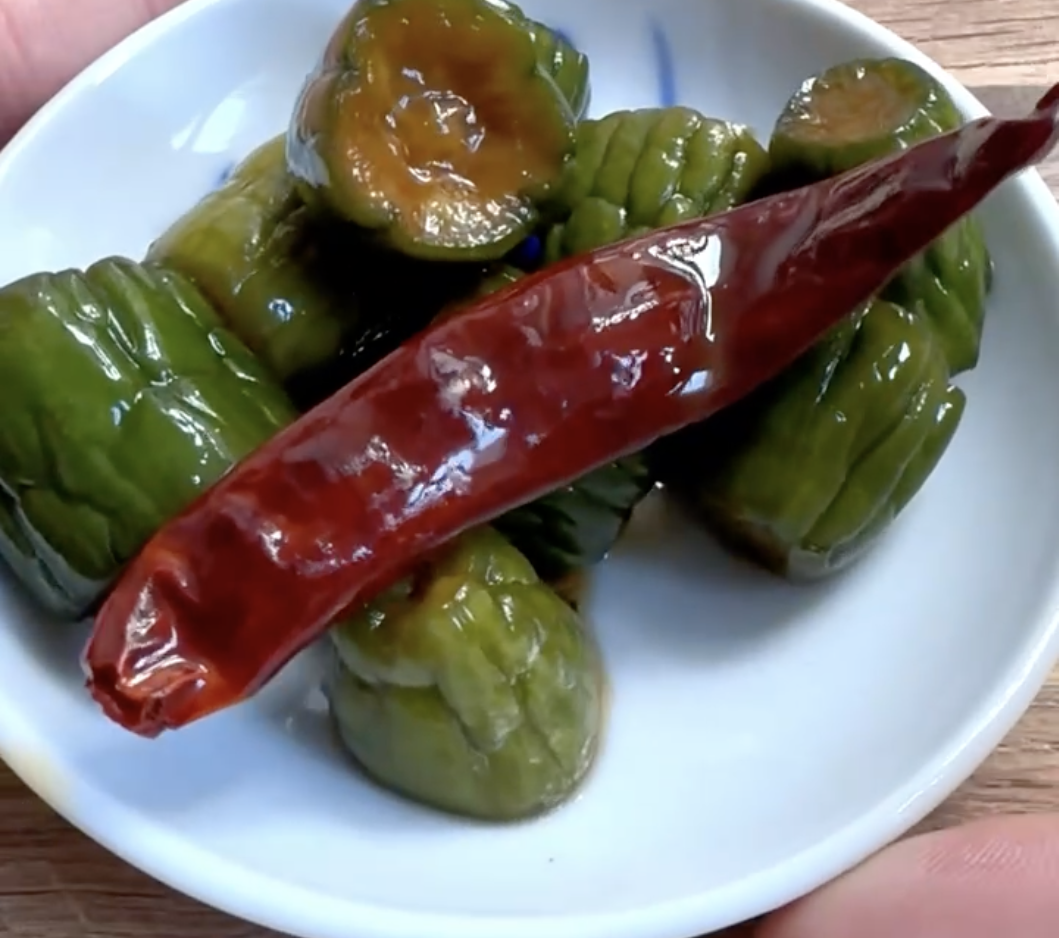watermelon rind ponzuzuke
citrusy savoury pickles (and did I mention it's low waste?)

Kenji Morimoto•
Oct 31, 2025
If you know me, you won't be surprised to see a watermelon rind pickle. I really love watermelon rind, as once the peel is off, the texture is reminiscent of a dense cucumber - ideal for pickling (or fermenting). Here, I've given it a rather normal pickling treatment - first salting it for a few hours to remove some of its water content, and then brining it in ponzu. Ponzu is an increasingly common Japanese sauce, soy + citrus based with a fair amount of zing. It's delicious on salads and often served with gyoza (dumplings) in Japan.
You can, of course, use shop bought ponzu but it's actually quite easy to make (and uses pantry ingredients) and allows you to adjust the flavours based on your own personal preferences (ie, using other forms of citrus such as orange, lemon, or lime).
Enjoy this one after a few hours (however best enjoyed the next day) and best eaten within 10 days!

Kenji Morimoto is a London-based Japanese American food writer and content creator who specializes in fermentation. He draws from his cultural heritage to teach, write, and share culinary knowledge through various platforms, including his popular Instagram @kenjcooks and his upcoming book "Ferment."
Ingredients (7)
Ingredients (7)
Ponzu
Instructions
Put the prepared watermelon rind in a large bowl and weigh out 3% of the total weight of the watermelon rind in salt. Add the salt to the watermelon rind and give this a mix. Let this salt for 2-3 hours, giving it the occasional mix.
Whilst the watermelon rind is salting, make the ponzu by lightly simmering all of the ingredients. Take it off the heat as soon as the sugar dissolves.
Squeeze the watermelon rind and drain the residual salty water; We will not be using this. Add the watermelon rind to a container and pour the ponzu on top. Pad the watermelon down to ensure equal coverage by the brine.
Note that the ponzu brine will not fully cover the watermelon rind.
Move this to the fridge and give it a shake every 30 minutes (or when you remember) for the first few hours. This is best enjoyed the following day and best eaten within 10 days.



